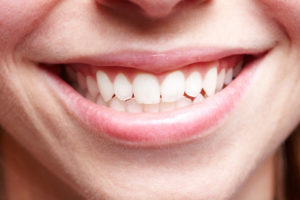If you’re one of the estimated 178 million Americans missing at least one adult tooth, or the nearly 40 million Americans missing all of their adult teeth, you may also be considering a tooth replacement solution. If you’re interested in replacing your missing teeth but aren’t sure which tooth replacement option is best for you, don’t despair. We asked Dr. Alexandra George of Pittsburgh, Pennsylvania to help explain the pros and cons of each tooth replacement option to help you make the most informed decision.
“There are two basic categories of tooth replacement prosthetics: bridges and implants.” George said. “Within each category, there are many variations, but each variety follows the same general structure, varying slightly by materials and design.”
Each main category of dental device varies in both permanence and cost, but which one you choose depends on many factors, which vary by individual patient. So while you may not know which solution is best for your mouth without speaking to your dentist, knowing as much as you can about each appliance can help you make an informed decision when it’s time to decide.
Bridges
The next option for tooth replacement is a bridge. A bridge is a permanent device that “bridges” across the space that is missing the tooth. The bridge is secured to the mouth by creating two crowns on the teeth, flanking the space created by the missing tooth. The crowns then fit onto the two shaved down teeth, with a third, center tooth that is attached to the abutting crowns. This creates the appearance of successive, natural teeth. Because the bridge is permanently secured to the two crowned teeth, it is considered a permanent device, which cannot be removed for cleaning. A bridge is treated just as you would natural teeth, taking care to floss between crowned teeth to avoid gum infection. A bridge is a great solution for patients with a healthy mouth who are only missing a few teeth.
Dental Implants
Dental Implants are the Cadillac of the cosmetic dentistry world. These permanent tooth replacements consist of a metal post that is secured to the jawbone beneath the gums, and an artificial crown tooth that screws on top. After the post sets in the bone and heals, your dentist can then attach the artificial tooth or crown directly onto the post. Because the post is set into your jawbone, the implant is considered permanent. The tooth looks natural and sits on the gum the same way a regular crown does.
“Even under the best conditions, there is still a chance that dental implants may not ‘take’ and the post may not stay secured to the jawbone,” George said.
If this happens the post must be removed, and depending on the situation, may never be able to be reattached.
So, which solution is best? According to Dr. George, that’s between the patient and his or her dentist.
“When deciding which tooth replacement to use, you need to consider many factors,” George said. “Your dentist is trained to assist in identifying these factors, and helping you make an educated decision that takes into account your health, budget, and lifestyle.”


